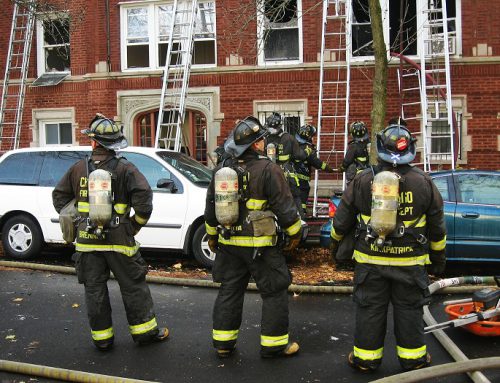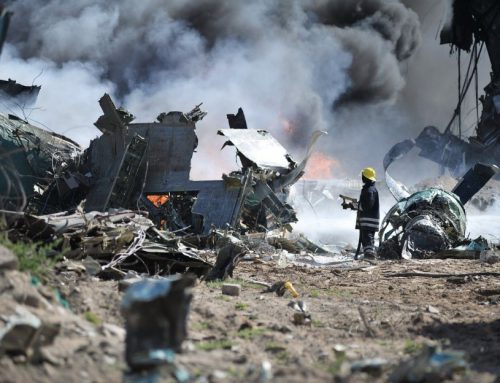The term “mission-critical software” gets tossed around in the emergency services industry, but what does that term mean for modern public safety agencies?
“We provide mission-critical solutions”
“Capturing mission-critical data”
“This device is for mission-critical applications.”
“Mission-critical” is used in broad contexts, to describe a variety of applications, devices, and information. Below, we discuss what it really means to be “mission-critical” and how public safety departments can determine if their software systems are making the cut.
Defining Mission-Critical Software
The dictionary names mission-critical software as anything “extremely important or necessary for a company, activity, etc. to operate successfully.”
For public safety agencies, mission-critical software allows them to perform their day-to-day duties and protect the public.
Specifically, mission-critical public safety software must work – no matter what. First responders respond to and manage various incidents, including everything from a routine structure fire to a major natural disaster. In the case of a hurricane or tornado, responders need to be confident that their “mission-critical” systems will function, regardless of the conditions outside.

Consider the following scenario:
As firefighters travel to a large-scale warehouse fire, their MDT response software freezes. They lose access to maps, navigation, guidance, SOPs, incident pre-plans, and more. The minutes tick by as the responders try to locate and manage the incident with limited tools and information. It’s possible that the original 9-1-1 callers don’t receive the help they need in time. All because of a software glitch.
No matter what’s causing the problem with a department’s MDT software, the outcome is unacceptable. A broken system can mean the difference between life and death for public safety personnel and the people they protect.
Specifically, mission-critical software requires:
- Enterprise-level servers that can support high levels of data across multiple devices
- Self-contained communication systems that can operate with or without an internet/cellular connection
- Locally-stored information that can be accessed at any location
Mission-critical software just works. No bugs, no delays. You have an emergency, you need help, you’ve got a working system.
Does Your Software Measure Up?
If your current emergency response or incident command software fails to work out in the countryside or other challenging environments, it’s not fulfilling your department’s needs.
If it prevents responders from performing their duties to their best capabilities, it’s not mission-critical.
We commonly see this issue with web-based applications. Although many of them claim to work “anytime, anywhere”, they still require a stable internet connection. Even the highest rated connected cities host cell dead zones. Lose the connection, and your software’s toast. Responders can’t access vital information and may lose the ability to communicate.
To see if your software has what it takes, ask yourself the following questions:
- Does it work regardless of a Wi-Fi or a cellular connection?
- Can I access my data even if I am “Offline”?
- Can users communicate regardless of geographic factors Ex: entering a parking garage?
If the answer is not “Yes” to all three, then you might want to consider an alternative. Many times, software is generalized for many different industries and needs, not specific to public safety.
Third-party providers might not understand the specific and unique requirements first responders have. Unless they have staff members who are familiar with or part of the public safety industry, they also might not realize the demands of the job and the particular features that emergency services personnel need in order to perform their duties.

When purchasing software for your department, make sure that your provider understands what it means to provide mission-critical software to the public safety industry. Otherwise, you might end up with an application that fails at the critical moment you need it the most.
Adashi’s Mission-Critical Solutions
At Adashi, we provide mission-critical software to ensure that public safety staff are confident that their devices will work – no matter what. Our emergency response and incident management software both operate on localized networks, or self-contained communication systems in addition to wide-area networks.
We believe public safety software should be designed specifically for public safety needs. To us, that means it helps emergency responders manage any kind of incident, in any conditions.
Public safety is important, and it’s critical that emergency services organizations have the right tools to perform to the best of their abilities. To learn more about Adashi’s mission-critical public safety solutions, visit our website at www.adashi.com or request a free web demonstration with one of our product experts.
If you enjoyed this article, please check out some of our related posts:
Are Your Emergency Response Systems Ready for a Major Disaster?
Self-Contained Communication Systems: The Technology Lives Depend On

Alex Menkes is the CEO of Adashi Systems. He has numerous years of experience in the public safety industry, having previously led the CBRE automated decision aid software department at OptiMetrics, a leading developer of CBRN hazard decision-aid software for military use.






Leave A Comment
You must be logged in to post a comment.